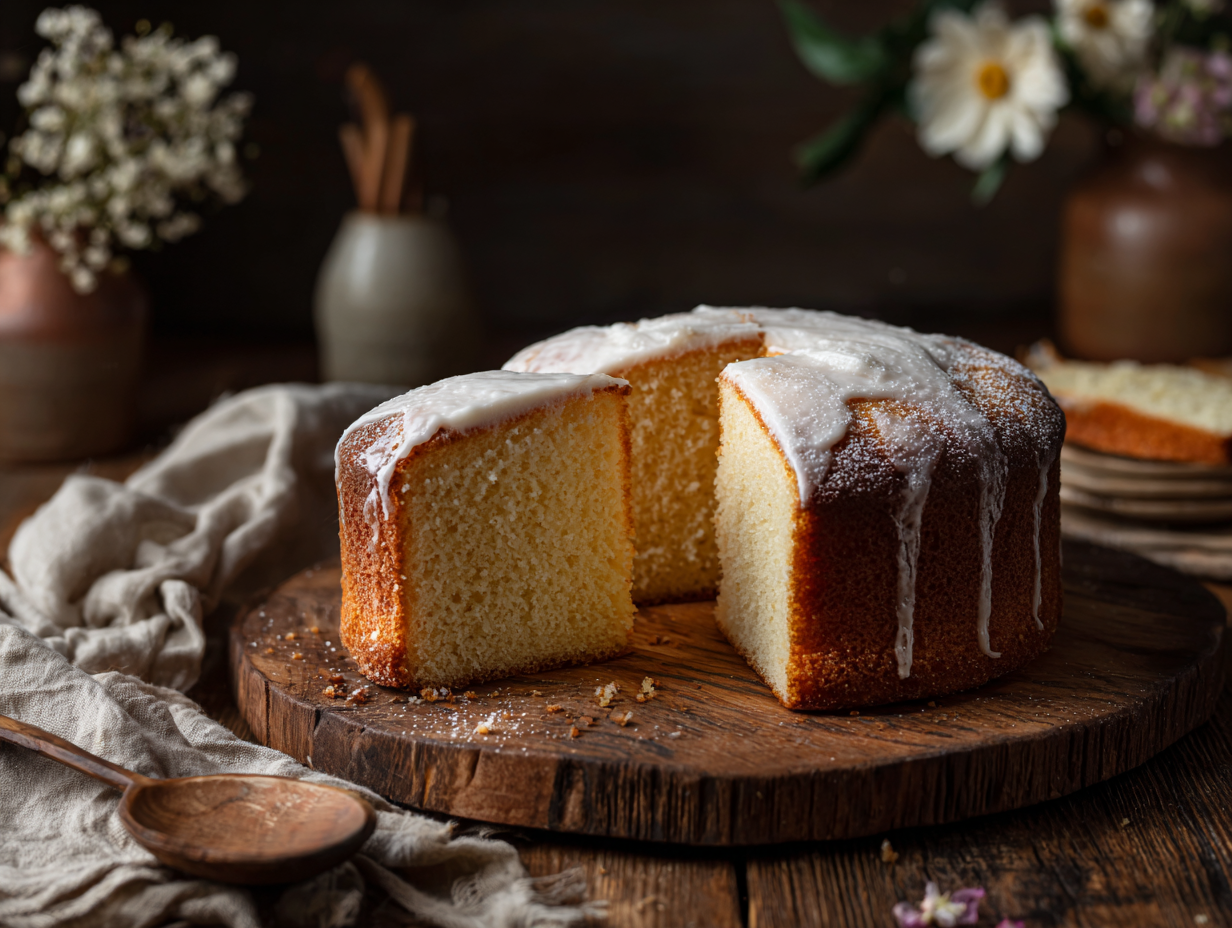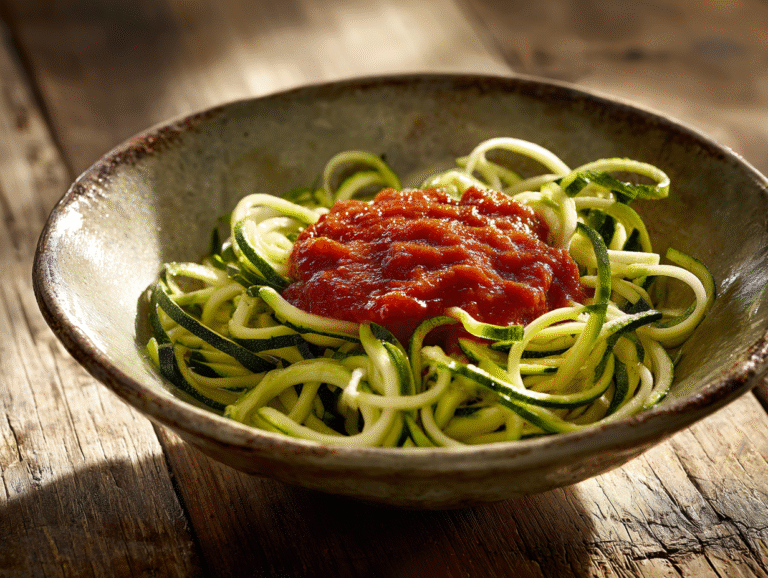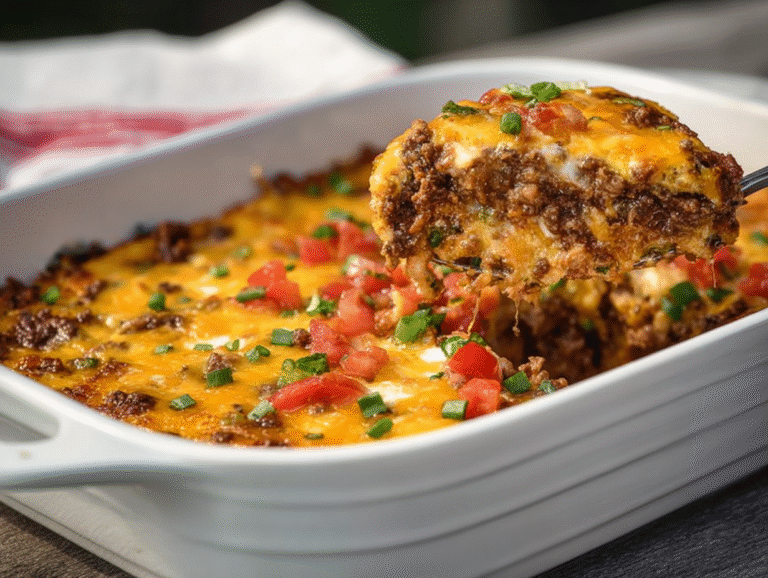Keto Vanilla Cake with Almond and Coconut Flour: A Sweet Low-Carb Treat
There’s something magical about a slice of vanilla cake—it’s simple, comforting, and always welcome at the table. When I first started experimenting with keto baking, I was skeptical. Could a Keto Vanilla Cake with Almond and Coconut Flour really taste as good as the classic version? To my surprise, it did—and then some. Almond flour gave it richness, coconut flour added lightness, and together they created the perfect base for a guilt-free treat. In this article, we’ll dive into why these flours work so well together, how to bake the ultimate keto vanilla cake, and tips for variations you’ll love.
The Story & Intro
The first time I baked a Keto Vanilla Cake with Almond and Coconut Flour, I remember hovering nervously by the oven door. I had grown up on traditional butter-and-sugar cakes, the kind you’d find at family gatherings next to a warm banana bread recipe or a classic pound cake. But switching to keto meant rethinking everything I knew about baking. I wasn’t sure if almond and coconut flour could deliver the same cozy bite that made cakes feel like home.
When I finally pulled the cake out, the golden top cracked slightly, giving off a sweet, nutty aroma. One bite in, and I knew it was a keeper. The almond flour gave the cake a rich, buttery taste, while the coconut flour kept it light and fluffy without overpowering the vanilla. It reminded me of the first time I tried making strawberry cream cheese pound cake: simple ingredients that, when combined just right, created something unforgettable.
What makes this cake truly special is how it fits seamlessly into a keto lifestyle. Instead of refined flour and sugar, it uses low-carb alternatives that still deliver flavor and texture. Whether you’re serving it as a birthday treat, enjoying it with coffee, or dressing it up with sugar-free frosting, this cake proves that keto desserts can be just as satisfying as traditional ones.
In the next section, we’ll break down why almond and coconut flour are staples in keto baking, and how they balance each other to create the perfect texture in your cake.
Baking with Keto-Friendly Flours
Baking a Keto Vanilla Cake with Almond and Coconut Flour starts with understanding why these two flours work so well together. Almond flour, made from finely ground blanched almonds, is naturally low in carbs and rich in protein and healthy fats. It gives cakes a tender crumb and a slightly nutty flavor that pairs beautifully with vanilla. If you’ve ever enjoyed a slice of vanilla bean French toast bake, you know how comforting that warm, sweet nuttiness can be.
On the other hand, coconut flour is a powerhouse in its own right. Made from dried coconut meat, it’s high in fiber and very absorbent. This means you need less of it compared to almond flour, but when balanced correctly, it lightens up the density of the cake and gives it structure. The combination of the two creates a cake that’s moist yet fluffy, with just the right amount of stability to hold frosting or whipped cream toppings.
Almond and coconut flour also make this recipe naturally gluten-free, which is an added bonus for those avoiding wheat. Unlike traditional flours, these keto-friendly options won’t spike blood sugar, making them perfect for anyone keeping carbs in check. It’s the same approach I use when baking moist pumpkin bread—choose ingredients that bring both health benefits and delicious results.
When used together, almond and coconut flour complement each other perfectly. Almond flour adds richness and moisture, while coconut flour ensures the cake isn’t overly dense. The key is striking the right balance, usually with almond flour as the base and a smaller amount of coconut flour to lighten the texture. This dynamic duo is the secret behind creating a keto cake that feels indulgent but fits right into your low-carb lifestyle.
Also Read: Crispy Baked Keto Chicken Nuggets: A Flavorful Low-Carb Classic
Crafting the Perfect Keto Vanilla Cake
The magic of a Keto Vanilla Cake with Almond and Coconut Flour lies in the details. Getting that moist and fluffy texture isn’t just about the flours—it’s about how the ingredients come together. Almond flour brings richness, but without enough eggs, the cake can fall flat. Eggs act as both a binder and a leavener, adding lift and structure. Coconut flour, being highly absorbent, soaks up moisture, so the right balance of eggs and healthy fats is key to avoiding dryness. Think of it like baking salted caramel apple pie cheesecake: precision in the ratios makes all the difference.
Sweeteners also play a big role. While traditional cakes rely on sugar for sweetness and texture, keto recipes use sugar substitutes such as erythritol, monk fruit, or allulose. These not only keep the carbs low but also help mimic the tender crumb you expect in a classic vanilla cake. Pairing these with butter or coconut oil keeps the cake moist and flavorful. Vanilla extract, of course, is the star—it brings that warm, familiar aroma that makes this cake irresistible.
What sets this cake apart is its adaptability. You can dress it up with a sugar-free buttercream or keep it simple with a dusting of powdered sweetener. The base recipe also works beautifully for cupcakes or layered cakes, making it versatile enough for birthdays, gatherings, or just a cozy afternoon treat. I love experimenting with flavors the same way I do with sugar-free cheesecake: a solid foundation makes it easy to get creative.
With the right balance of flours, eggs, and sweeteners, you’ll create a keto vanilla cake that’s tender, satisfying, and every bit as indulgent as its traditional counterpart.
Tips, Tricks & Variations
Even the best recipes can go sideways without the right techniques, and a Keto Vanilla Cake with Almond and Coconut Flour is no exception. One common mistake is overpacking the almond flour. Since it’s denser than traditional flour, too much can make your cake heavy. Always spoon and level it rather than scooping directly from the bag. Coconut flour, on the other hand, is highly absorbent, so adding even a tablespoon too much can dry out your cake. Stick to the recipe ratios for the perfect balance.
Overmixing is another pitfall. Unlike gluten-based batters, almond and coconut flour don’t benefit from extra stirring. In fact, mixing too much can make the batter dense and tough. Stir just until everything is combined, and let the oven do the rest. It’s the same mindful approach I use when baking keto coconut cheesecake, where texture is everything.
If you want to get creative, this cake is the perfect canvas. Turn it into cupcakes by adjusting the bake time, or stack it into a layered celebration cake with sugar-free frosting between each tier. You can even add mix-ins like unsweetened shredded coconut, sugar-free chocolate chips, or berries for a twist. The foundation of almond and coconut flour makes it flexible enough for experimenting, much like the flourless keto chocolate cake that can be dressed up or down depending on the occasion.
For a seasonal spin, try adding spices like cinnamon or nutmeg, or a splash of almond extract alongside the vanilla. These small tweaks can give your keto cake a whole new personality while still keeping it low-carb and delicious. With a few tricks up your sleeve, this simple vanilla cake can transform into endless variations for any occasion.
FAQs About Keto Vanilla Cake with Almond and Coconut Flour
Is almond and coconut flour keto friendly?
Yes, both almond and coconut flour are keto friendly. They’re naturally low in carbs and high in healthy fats and fiber, making them excellent replacements for wheat flour in keto baking.
Is it better to bake with almond flour or coconut flour?
It depends on your recipe. Almond flour creates a rich, moist texture, while coconut flour is lighter but more absorbent. Many keto recipes use a combination of both to balance texture and flavor.
Is coconut cake keto friendly?
Traditional coconut cake isn’t keto friendly because it’s made with wheat flour and sugar. However, when you swap in almond and coconut flour with sugar-free sweeteners, you can enjoy a delicious keto coconut cake.
What is the best keto flour for cakes?
The best flours for keto cakes are almond and coconut flour. Used together, they create a moist, fluffy cake that mimics the texture of traditional baked goods while keeping carbs low.
What is the ratio of coconut flour to almond flour?
Since coconut flour absorbs much more liquid, you generally use a smaller amount—often about 1/4 cup coconut flour for every 1 cup almond flour. Recipes vary, but this balance usually works well.
Conclusion
Baking a Keto Vanilla Cake with Almond and Coconut Flour proves that low-carb desserts don’t have to compromise on taste or texture. The combination of almond flour’s richness and coconut flour’s lightness creates a cake that feels indulgent yet fits perfectly into a keto lifestyle. With the right ratios, a touch of vanilla, and mindful mixing, you’ll have a cake that’s versatile enough for birthdays, cozy afternoons, or just when you’re craving something sweet. Once you try it, this recipe will likely become your go-to keto dessert, one that brings comfort, joy, and a taste of home every time.
Please let me know how it turned out for you! Leave a comment below and tag @foodiecreator on Instagram and hashtag it #foodiecreator. I’d love to see how you make it your own.
PrintKeto Vanilla Cake with Almond and Coconut Flour: A Sweet Low-Carb Treat
- Total Time: 45 minutes
- Yield: 8 slices 1x
Description
A moist and fluffy Keto Vanilla Cake with almond and coconut flour, perfect for low-carb and gluten-free lifestyles.
Ingredients
1 ½ cups almond flour
¼ cup coconut flour
½ cup butter, melted
¾ cup keto sweetener (erythritol or monk fruit)
4 large eggs
1 tbsp vanilla extract
1 tsp baking powder
Pinch of salt
½ cup unsweetened almond milk
Instructions
1. Preheat the oven to 350°F (175°C). Grease and line an 8-inch cake pan.
2. In a mixing bowl, whisk eggs, melted butter, sweetener, and vanilla until smooth.
3. Add almond flour, coconut flour, baking powder, and salt. Stir until combined.
4. Pour in almond milk and mix into a smooth batter.
5. Transfer batter into the prepared pan and smooth the top.
6. Bake for 30–35 minutes until golden and a toothpick comes out clean.
7. Cool in the pan for 10 minutes, then transfer to a wire rack.
8. Serve plain, or top with sugar-free whipped cream or frosting.
Notes
Store leftovers in an airtight container for up to 4 days.
Can be frozen for up to 2 months.
Easily adapted into cupcakes—reduce bake time to 20–22 minutes.
- Prep Time: 10 minutes
- Cook Time: 35 minutes
- Category: Dessert
- Method: Baking
- Cuisine: American
Nutrition
- Serving Size: 1 slice
- Calories: 230
- Sugar: 1g
- Sodium: 90mg
- Fat: 20g
- Saturated Fat: 9g
- Unsaturated Fat: 10g
- Trans Fat: 0g
- Carbohydrates: 6g
- Fiber: 3g
- Protein: 7g
- Cholesterol: 80mg












